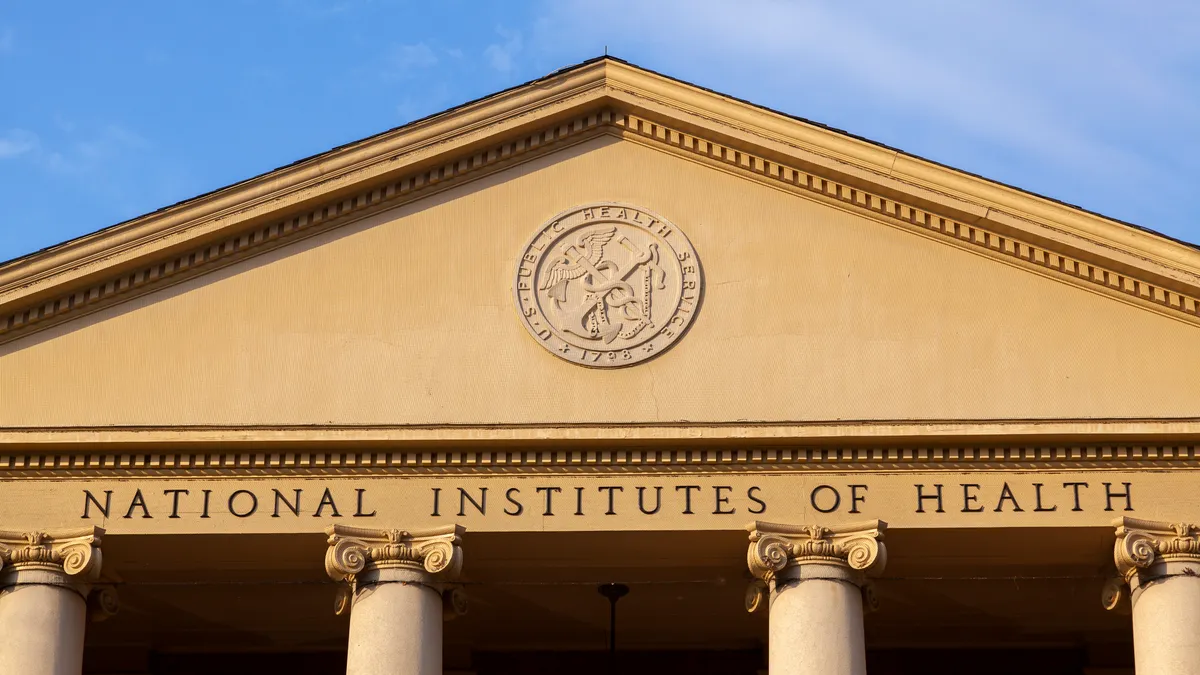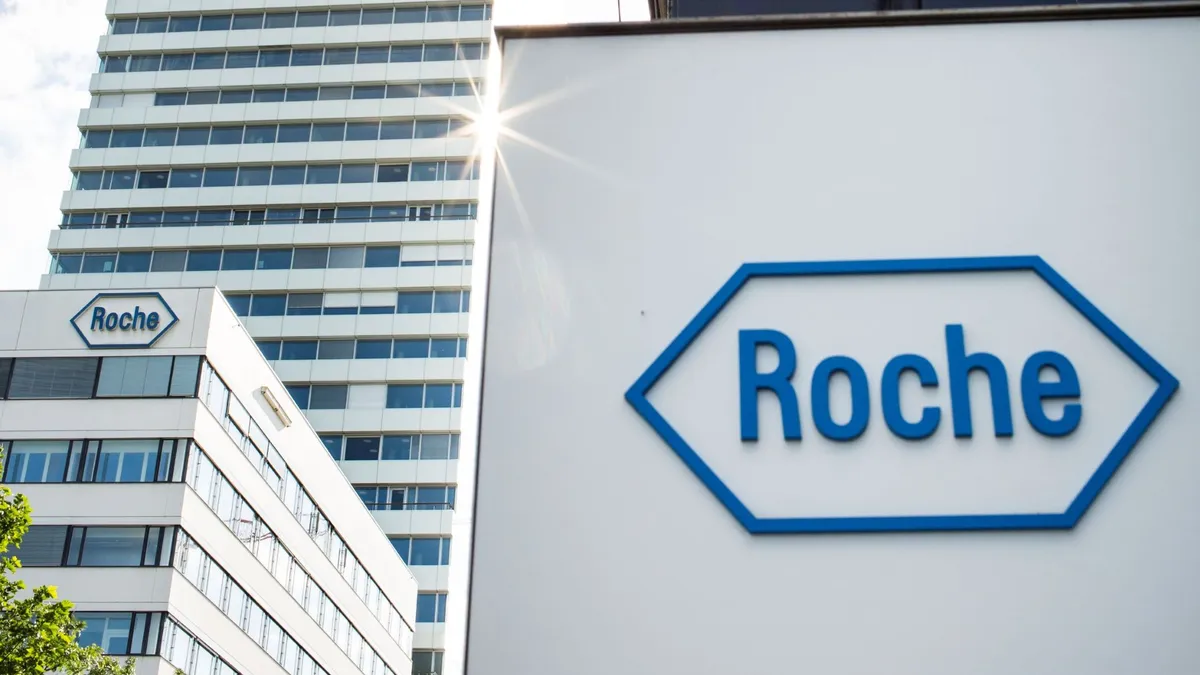Proposed funding cuts to the National Institutes of Health might not make a huge splash in biopharma right away, but industry leaders have expressed concern over potential ripples left in their wake.
As they stand currently, cuts by the Trump administration would lower the NIH budget in 2026 by about 40% to less than $28 billion, consolidating the agency while putting ongoing and future grants in jeopardy. Considering almost every new drug approved between 2010 and 2019 stemmed in some way from NIH funded research, experts have warned that the pace of U.S. innovation could be deeply affected by these measures.
While the proposed budget faces a fight from lawmakers and judges to keep grants flowing, leaders in pharma and biotech are worried about the effect even a diminished reduction would have on scientific progress.
“If you don’t plant the seeds, you’re not going to have any wheat,” said Kevin Noonan, partner at biopharma intellectual property law firm MBHB. “There are plenty of industries that do their own R&D, but for the past 40 years, this is one where more of the innovation flows from universities.”
A loss of future scientific discovery is only part of the picture. Cuts of the magnitude proposed by the administration could also threaten the U.S.’s position as a leader in medical advancement, a biopharma pipeline that has come to depend on NIH innovation to move forward and the trajectory of early science careers, leaders said.
Brain drain
The cuts would bring the NIH budget to about where it was in 2006 when President George W. Bush slashed funding for the first time since 1970, according to an MIT Technology Review article at the time. And innovation in the field has become increasingly complicated in the years since.
The industry’s aims have shifted to disease targets with a much higher bar for entry, Noonan pointed out. Rather than a scattershot approach to find pharma’s low-hanging fruit, scientists now need to explore underlying biology and be more intentional in their discovery process to remain on the cutting edge.
“If you don’t plant the seeds, you’re not going to have any wheat."

Kevin Noonan
Partner, MBHB
Those Bush-era cuts made a notable difference in the kinds of innovation drugmakers could bring to the market, said Martin Brenner, CEO and chief scientific officer at iBio, which is developing weight loss antibodies. These proposed cuts could drive the nail in deeper.
“If we look back 20 years when the first big cuts happened at the NIH, we saw a dramatic reduction in output for a while,” Brenner said. “I think we’re going to see an adjustment to a new level, because it’s never a good idea to cut funding in these early spaces.”
Biopharma leaders are trying not to be overwhelmed by the whiplash in the early days of the Trump presidency. But the broad strokes have so far made matters obscure at best, with uncertainty playing its own role in raising industry hackles.
“It’s easy to be an alarmist, and this will settle at some point — but at the same time, we shouldn’t forget that making medicines requires a village,” Brenner said. “If we lose people again and again, and other parts of the world invest in these spaces instead, we’re going to have a brain drain.”
“Brain drain” is a serious concern as a lack of funding could drive young people out of the sciences in the first place, said Detlev Mennerich, global head of Boehringer Ingelheim Venture Fund.
“It’s not good for the ecosystem,” Mennerich said, referring to funding cuts. “All major inventions started at an academic institute in North America and Europe, and if we shorten the fuse for that engine, it will have an impact on a whole generation of scientists.”
Mennerich’s son, who began studying biology last year, is left wondering whether he made the right career decision, given what some see as an existential threat to the funding environment, Mennerich said.
“The strength of the North American academic system is the diversity of international students and people who are able to make a career according to performance,” Mennerich said. “With pressure on the system, there will be a long-term impact on the breadth of innovation.”
Mired in politics
Many of today’s biopharma companies stood on the shoulders of NIH funding early in their journey. Regenerative stem cell company Longeveron received NIH funding in the first five years that co-founder, chief science officer and chairman Dr. Joshua Hare said was “life-saving” when it was still a private biotech. While the company raised about $26 million from investors, it also received about $20 million in grants, mostly from the NIH. Hare said he and others at the company are in talks with the agency for “a very big grant, and they seem receptive to have us apply.”
But the idea of “winners and losers” being decided by political leanings in the Oval Office or at the top of Health and Human Services has led to a feeding frenzy in some corners of the industry, Hare said.
“There are certain ideas that [Trump] and [HHS secretary Robert F. Kennedy Jr.] like, the things that are important to them, and if you’re working in those areas, you might be able to get more money than you might have gotten before,” Hare said. “If there’s an opportunity, we’re going to take it.”
Regenerative medicine is one of the areas that could thrive under the new regime, Hare said, but deciding priorities in that way isn’t necessarily positive for the industry overall.
“I think the cuts in funding are heavily political in trying to beat up certain universities and cut government spending,” Hare said. “But at the end of the day, I don’t think [Trump] wants to shut down the American medical enterprise.”
Creating a vacuum
Faced with reduced public funding, some in the biopharma industry hope private investors and organizations can fill the void. In some cases, they can — in others, not so much.
“The gap between early preclinical research and clinical research is becoming vast, and there are very few investment groups or biotech companies able to address that,” said Ali Munawar, founder and CEO of Pledge Therapeutics. “Who’s going to develop tomorrow’s clinical assets if there’s no investment there?”
In recent years, Big Pharma has taken an earlier approach to drug development in a race to pick up pipeline candidates before they reach a high valuation, sharing the risk between big buyers and smaller sellers.
“All major inventions started at an academic institute in North America and Europe, and if we shorten the fuse for that engine, it will have an impact on a whole generation of scientists.”

Detlev Mennerich
Global head, Boehringer Ingelheim Venture Fund
But Munawar is unsure whether M&A can fill the gap left by vanished grants and diminished preclinical funding at the academic level.
“If you don’t invest now in tomorrow’s medicines, it’ll be too late tomorrow,” he said. “This is something that’s going to impact the field three, four, five years down the line — what we’re going to see is fewer early-stage science companies advancing, and more from India, China and Russia.”
Chinese investment in early-stage science is paying off in skyrocketing research publications, Munawar said, “leaving us in the dust.”
Other companies could leverage the cuts into an opportunity, particularly those that wait to purchase later-stage assets, like Catalyst Pharmaceuticals. While support for preclinical science isn’t Catalyst’s bread and butter, chief strategy officer Preethi Sundaram sees a chance to play a role in a changing landscape for drug development, even on the later side of it.
“The environment is challenging for research-stage products overall, but I also see it as an opportunity for companies like [Catalyst] to tap into that space and help develop or build infrastructure,” Sundaram said. “It’s a chance to push the bar and grab things that are sufficiently derisked from companies that can’t support them.”
U.S. scientific resilience
The U.S. is still where the rest of the world goes for cutting-edge science, and even with other nations on the rise, that won’t change any time soon, said Dr. Mathai Mammen, former head of R&D at J&J and now CEO of Parabilis Medicines.
“We’re still seen in the world today, despite all these actions, as the very best place to be hyper innovative, and where there’s a confluence of both great science and infrastructure, including an investment world that supports hyper-innovation,” Mammen said. “We are still the country where you’re able to think big thoughts and have a hope they’re going to be achieved — I’ve been in a lot of different countries, and it’s just not true elsewhere.”
Mammen met with a French investor recently who said that even a defunded American researcher still has a good deal more funding than the best French researcher.
“NIH funding has tripled or more in my lifetime, and it’s still a relatively well-funded system,” Mammen said. “But while there are some fundamental problems with how grants are handed out and I don’t mind some restructuring, I do worry about the magnitude of cuts and the things that haven’t played out yet.”
While NIH cuts could be detrimental to U.S. scientific standing, they don’t automatically portend a meager future for biopharma, Mammen said.
“My colleagues and I will contest any kind of cut to NIH funding,” Mammen said, “but I also don’t want to over-index on that to say the sky is falling.”


















